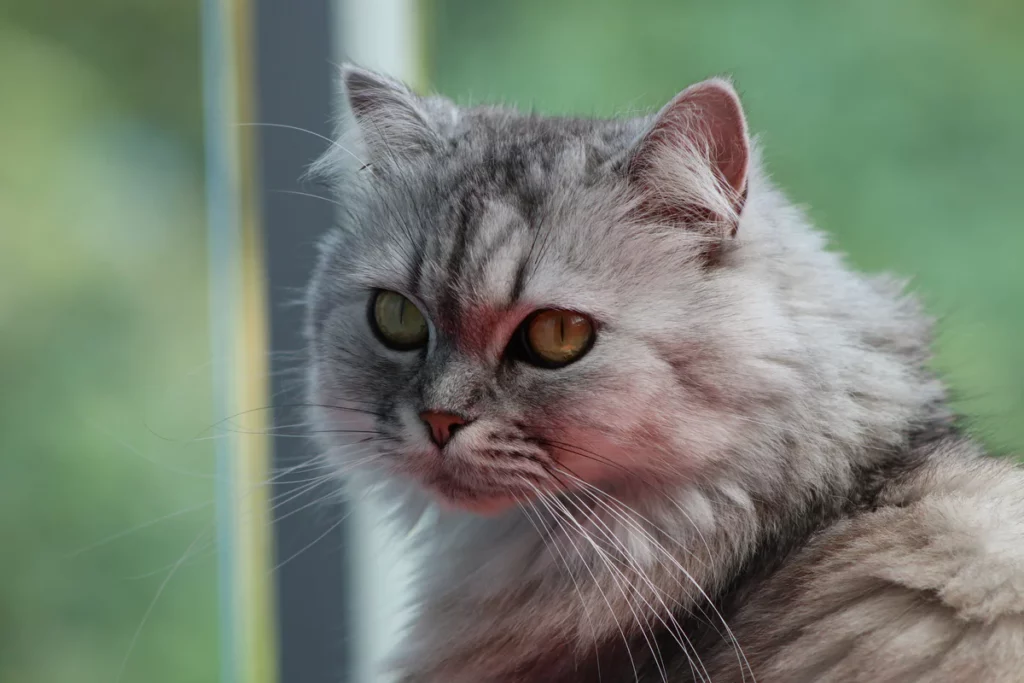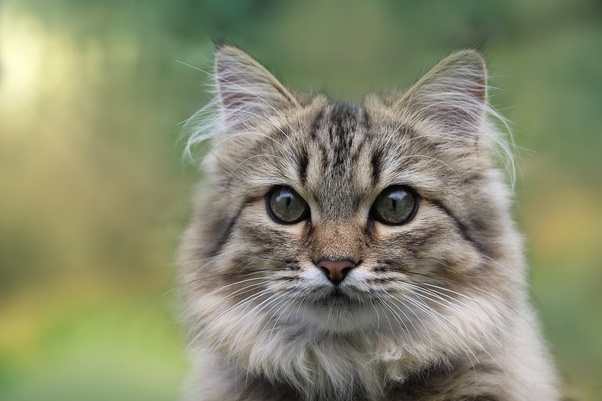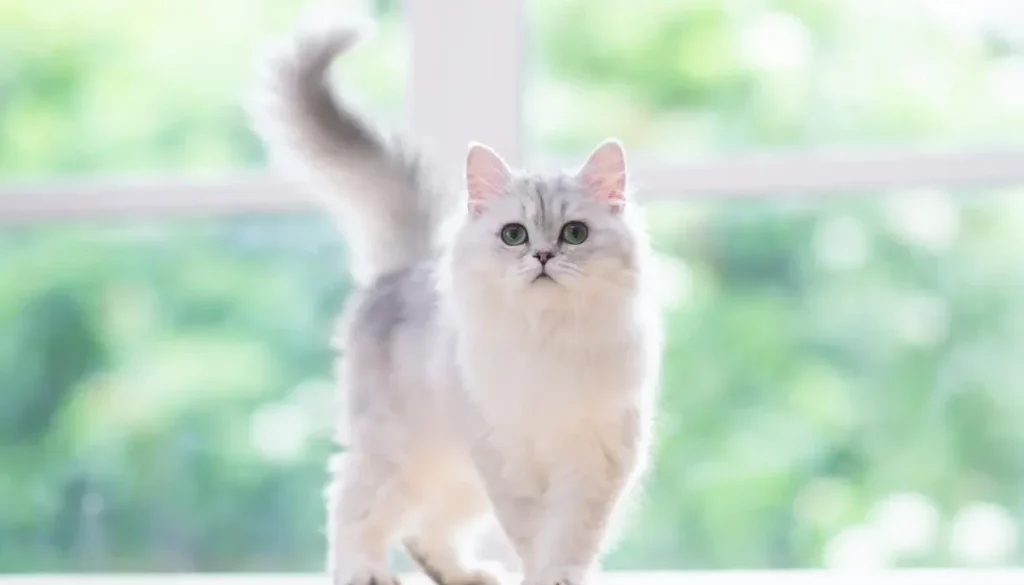Understanding Persian Cat Behavior: Temperament and Socialization
Persian cats, with their luxurious coats and expressive eyes, are one of the most beloved cat breeds in the world. In this article, we will delve into the behavior of Persian cats, focusing on their temperament and socialization. Understanding these aspects of a Persian cat’s personality can help cat owners provide the best care and environment for their furry friends.
History and Origin of Persian Cats
Persian cats have a long and fascinating history that dates back to ancient times. These elegant and luxurious cats are believed to have originated in Persia, which is now modern-day Iran. They were highly prized for their beauty and companionship qualities by the elite and aristocrats in Persia.
The exact origins of Persian cats are somewhat mysterious, as there are conflicting theories about how they came to be. Some believe that they were native to Persia, while others suggest that they were brought to the region by travelers or traders from other parts of the world.
Persian cats first gained popularity in Europe in the 17th century when they were introduced to the continent by explorers and merchants. They quickly became favorites among royalty and the nobility, who prized them for their elegant appearance and gentle demeanor.
The distinctive features of Persian cats, such as their long, flowing coats, round faces, and expressive eyes, were highly sought after and associated with luxury and status. Over the centuries, Persian cats have been bred selectively to enhance these characteristics, resulting in the variety of colors and patterns that we see today.
Physical Characteristics of Persian Cats
Persian cats are known for their distinct and luxurious appearance. They have long, flowing coats that come in a variety of colors and patterns, from solid colors like white, black, and cream to intricate tabby and bicolor patterns. Their coats require regular grooming to prevent matting and tangles, making them high-maintenance in terms of grooming needs.
In addition to their lush coats, Persian cats have round faces with expressive eyes and small, rounded ears. They have a sturdy and compact body with a short, cobby build. Their legs are short and stocky, giving them a low-to-the-ground appearance. Overall, Persian cats have a regal and elegant look that sets them apart from other cat breeds.

Personality Traits of Persian Cats
Persian cats are known for their sweet and gentle nature. They are affectionate and loving companions who enjoy being pampered and cuddled. Persian cats are often described as laid-back and easygoing, preferring to lounge around and relax rather than engage in high-energy activities.
Despite their calm demeanor, Persian cats have playful and curious streaks. They enjoy interactive play and engaging with their human companions. They are intelligent and inquisitive, always exploring their surroundings and seeking out new experiences.
Persian cats are also known for their quiet and gentle demeanor. They have soft, melodic voices and communicate through a variety of vocalizations, such as purring and meowing. They are sensitive cats who thrive on attention and affection from their owners, forming strong bonds with those who care for them.
Temperament of Persian Cats
The temperament of Persian cats is characterized by their calm and laid-back nature. They are known for their gentle and placid demeanor, making them ideal companions for individuals looking for a low-energy and affectionate pet.
Persian cats are not as active or energetic as some other cat breeds. They prefer to spend their time lounging around the house, basking in the sun, and enjoying the comforts of home. They are content to curl up in a cozy spot and watch the world go by, rather than engaging in athletic or high-energy play.
Despite their relaxed temperament, Persian cats are affectionate and enjoy human companionship. They form strong bonds with their owners and crave attention and affection. They are social cats who thrive on being part of the family and participating in daily activities.
Persian cats are also known for their gentle and sweet nature. They are tolerant and patient animals, making them well-suited for households with children or other pets. They rarely exhibit aggressive behavior and prefer to avoid conflict or confrontation.
In summary, the temperament of Persian cats is best described as calm, gentle, and affectionate. They make wonderful companions for individuals seeking a laid-back and loving feline friend.

Socialization of Persian Cats
Socialization is crucial for Persian cats to ensure they are well-adjusted and comfortable in various situations. Early socialization helps Persian cats develop confidence and trust in their human companions, leading to a harmonious relationship between the cat and the owner.
Socializing Persian cats involves exposing them to different people, environments, and stimuli from a young age. Positive experiences with handling, interaction, and new experiences help Persian cats feel comfortable and secure in unfamiliar situations.
Introducing Persian cats to a variety of stimuli, such as different people, sounds, and environments, helps them develop social skills and confidence. Gradual exposure and positive reinforcement techniques are key to helping Persian cats become well-rounded and adaptable pets.
Consistency, patience, and positive reinforcement are essential when socializing Persian cats. By providing a safe and enriching environment, building trust and confidence, and offering rewards for good behavior, cat owners can help their Persian cats become social and well-adjusted companions.
Training Persian Cats
Training Persian cats can be a rewarding experience, as they are intelligent and responsive animals. Here are some tips for training Persian cats:
- Use positive reinforcement: Reward good behavior with treats, praise, or playtime to encourage desired behaviors.
- Be patient and consistent: Training takes time and consistency. Repeat commands and behaviors consistently to help your cat learn.
- Keep training sessions short: Persian cats have a shorter attention span, so keep training sessions brief and engaging.
- Use clicker training: Clicker training can be an effective way to communicate with your cat and reinforce desired behaviors.
- Focus on basic commands: Start with basic commands such as sit, stay, and come to establish a foundation for further training.
- Seek professional help if needed: If you’re having difficulty training your Persian cat, consider seeking guidance from a professional animal behaviorist or trainer.
Common Behavior Issues in Persian Cats
Some common behavior issues in Persian cats may include:
- Matting of the coat: Persian cats have long, dense coats that require regular grooming. Neglecting grooming can lead to matting, which can be uncomfortable and painful for the cat.
- Excessive shedding: Persian cats are known for their shedding, and hairballs may be a concern if grooming is not kept up.
- Respiratory issues: Due to their flat faces and brachycephalic features, Persian cats may be prone to respiratory issues such as snoring or breathing difficulties.
- Shyness: Some Persian cats may be shy or timid, requiring gentle socialization and patience to help them feel comfortable and confident in their environment.

Tips for Socializing Persian Cats
- Start early: Begin socializing your Persian cat from a young age to help them become comfortable with various people, environments, and experiences.
- Encourage positive interactions: Use treats, toys, and praise to reinforce positive social behaviors and interactions with your cat.
- Gradual exposure: Introduce your Persian cat to new people, sounds, and environments gradually to avoid overwhelming them.
- Be patient and gentle: Persian cats are sensitive animals, so approach socialization with patience, gentleness, and understanding.
- Provide a safe environment: Create a safe and enriching environment for your Persian cat to help them feel secure and confident in their surroundings.
Bonding with Your Persian Cat
Bonding with your Persian cat is essential for strengthening your relationship and building trust. Here are some tips for bonding with your Persian cat:
- Spend quality time together: Set aside dedicated time each day to interact and play with your cat. This helps build a strong bond and allows for meaningful interactions.
- Gentle petting and grooming: Persian cats enjoy being pampered and groomed. Regularly brushing their long coat can be a bonding experience for both you and your cat.
- Play together: Engage in interactive play sessions with toys that stimulate your cat’s natural instincts, such as chasing, pouncing, and hunting.
- Respect your cat’s boundaries: Pay attention to your cat’s body language and cues to understand when they need space or when they’re seeking attention. Respect their boundaries to build trust and strengthen your bond.
- Use positive reinforcement: Reward positive behaviors with treats, praise, and affection to encourage bonding and build a trusting relationship with your cat.
Providing Enrichment for Persian Cats
Enrichment is important for keeping Persian cats mentally stimulated and physically active. Here are some ways to provide enrichment for your Persian cat:
- Interactive toys: Provide toys that encourage play and mimic hunting behaviors to keep your cat engaged and entertained.
- Cat trees and perches: Create vertical spaces for your cat to climb, perch, and observe their surroundings. Cat trees and perches can satisfy your cat’s natural instincts and provide mental stimulation.
- Puzzle feeders: Use puzzle feeders or treat balls to make meal times more engaging and challenging for your cat. This can encourage problem-solving and keep your cat mentally sharp.
- Rotating toys and activities: Rotate toys, play sessions, and enrichment activities to keep your cat’s environment fresh and stimulating. This prevents boredom and encourages exploration and curiosity.
- Interactive playtime: Engage in interactive play sessions with wand toys, laser pointers, or feather toys to encourage exercise, bonding, and mental stimulation for your Persian cat.

Conclusion
Persian cats are known for their affectionate nature, regal appearance, and gentle temperament. By understanding their behavior, providing proper care, and engaging in enrichment activities, you can build a strong bond with your Persian cat and provide a fulfilling and enriched life for them.
By spending quality time, engaging in interactive play, and providing enrichment opportunities, you can create a happy and healthy environment for your Persian cat to thrive. Building a strong bond with your cat and meeting their physical and emotional needs will ensure a mutually rewarding and fulfilling relationship for both you and your feline companion.
Also, Read:
Pet Care Tips for Cats for Beginners
Pet Care Tips for Dogs for Beginners
